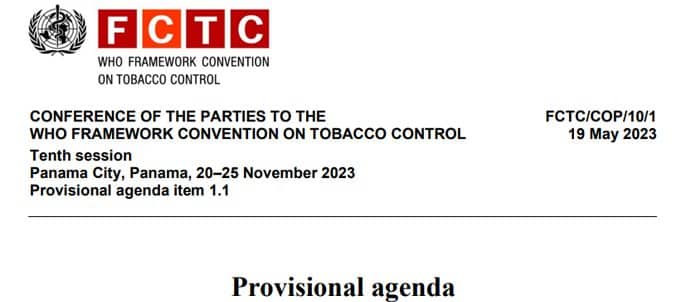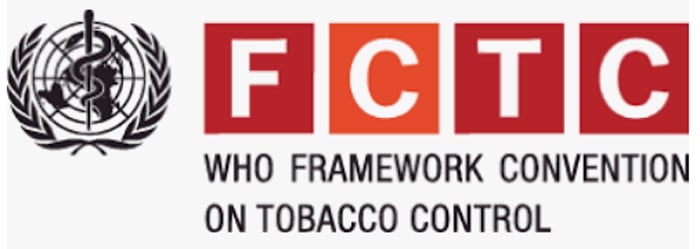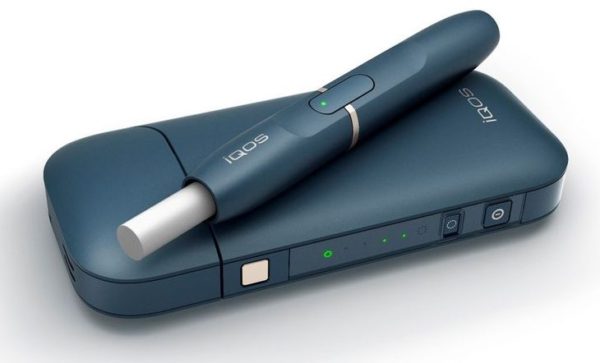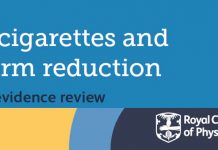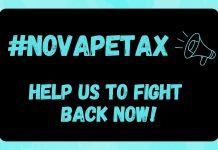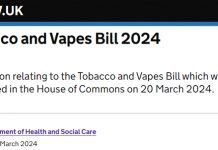The COP10 Agenda has been published!
The COP 10 (Conference Of the Parties) is organised by the World Health Organisation (WHO) for 20-25th November 2023 in Panama.
This event is held every 2 years and is attended by delegates from all 193 United Nations WHO member governments.
The conference will be discussing the FCTC (Framework Convention on Tobacco Control) and knowing WHO it will be very biased against vaping.
The UK is a signatory to the FCTC and also a major funder of related activities.
If no countries object to the proposals discussed then the FCTC will bring these into action.
If even a small group of countries object – the inability to achieve a consensus vote will mean these threats will not be put into action.
Agenda
I won’t be going through all 21 sections of this – mainly because the language used fries my brain. I tried a few and got myself totally confused, not to mention how angry I was getting at the ignorance of Science and studies on these very topics.
In fact – to be blunt – it is full of bullcrap.
You can read all the contents here – COP10 Agenda.
I also covered some of the threats in an earlier article – “WHO releases more threats against vaping for COP10“.
Heat Not Burn
One of the main threats appears to be how products are categorised. For instance HTP’s (Heated Tobacco Products – i.e. Heat Not Burn) are being investigated and recommended to be categorised as tobacco products.
Also they want the vapour from HNB devices to be classed as “Smoke”.
Vapes
There are many more threats too, especially towards vapes which they call “ENDS” – Electronic Nicotine Delivery Systems or “ENNDS” – Electronic Non Nicotine Delivery Systems.
The topics of regulation, testing standards and even bans are covered.
The document states…
“Parties that have not banned the importation, sale and distribution of ENDS and ENNDS may consider “banning or restricting the use of flavours that appeal to minors” to prevent the initiation of ENDS/ENNDS by non-smokers and youth, with special attention to vulnerable groups.
Whereas the second regulatory objective provides that Parties that have not banned the importation, sale and distribution of ENDS/ENNDS may consider
(i) testing heated and inhaled flavourants used in the e-liquids for safety, and banning or restricting the amount of those found to be of serious toxicological concern such as diacetyl, acetyl propionyl, cinnamaldehydes or benzaldehyde.
(ii) requiring the use of ingredients that are not a risk to health and are, when allowed, of the highest purity” to minimize as far as possible potential health risks to ENDS/ENNDS users and protect non-users from exposure to their emissions.
Considering the evidence that flavourings and sugars play a key role in user selection of ENDS/ENNDS e-liquids, especially by young people, thus contributing to the appeal of these products, the testing for these components should be prioritized for method development.”
Various statistics are quoted relating to use of ENDs by under 20’s and the possible harms to them are discussed. Also the myth of the “Gateway to smoking” theory raises its ugly head despite it being rebuffed in many scientific studies…
“Since publication of this systematic review, a number of studies as well as systematic reviews have been published which show an association between the use of electronic cigarettes among non-smoking young people and progression to the use of tobacco. This updated research has similarly reported more than three times increased risk, as compared with non-users of electronic cigarettes among youth and young people.”
It also dismisses studies which show how efficient vaping is for those to quit smoking and risks of vaping…
“Efficacy of ENDS and ENNDS as cessation aids: Overall, the certainty of the evidence across the studies and reviews is often rated as ”low” or “insufficient”.
Firstly, the published findings have a wide range of study designs and reliable evidence is limited.
Secondly, given the diverse nature of ENDS, more evidence is needed to examine various device types and varying nicotine delivery profiles.
Thirdly, the studies often involve insufficient length of follow-up in order to properly assess subsequent cigarette use, potentially as a dual user, or the duration for which a person continues to use ENDS.
Lastly, and perhaps most significantly, there is a critical need across the studies to uniformly define ‘cessation’, and whether a person who has switched from conventional cigarettes to ongoing use of ENDS can be considered to have successfully “quit”.”
I find the above passage quite upsetting, basically asking if people swap smoking for vaping have they really successfully quit smoking? Grrrrrrrrrrrrr…..
And here we have the root of the discussion – what WHO really want regarding e-cigarettes…
“It has to be highlighted that across the published evidence, there is incongruity in the findings, and at this time, there are still a number of unknown factors, which means that ENDS and ENNDS cannot be recommended as cessation aids at the population level.”
They could have just put that as the first line of the document and not wasted 25 pages trying to justify that the WHO are right and Science is wrong!
Nicotine Pouches
Oh yes Nicotine Pouches haven’t escaped a hammering either!
“This prompted WHO to commission some work on nicotine pouches, which includes a paper in the Ninth TobReg report on the “characteristics, use, harmfulness and regulation of nicotine pouches”, as well as a report on ”flavours in nicotine pouches”.
The paper noted that nicotine pouches are offered in a wide variety of sweet and fruity flavours, which are known to have a differential appeal to youth. Nicotine pouch brands further target youth, primarily advertising on social media channels, crossing national boundaries, and amplifying the visibility of pouch promotion globally, even in countries in which such marketing is illegal.”
Disposable Vapes
Called “Disposable END’s” or “D-ENDS” by WHO…
“WHO notes that disposable ENDS (D-ENDS), which were introduced around 2018–2019 and began circulating on global markets, are fast becoming a global public health challenge.
They are discarded after the e-liquid content is consumed, which means that all device components (plastic, metal casing, lithium battery, heating element, e-liquid, etc.) are intended to be used only once and thrown away.
Given the popularity of these products among children and adolescents and the alarming trends among young people in a number of countries, including Australia, Switzerland, the United Kingdom of Great Britain and Northern Ireland, and the United States of America, WHO commissioned a background paper on the characteristics, marketing, challenges of D-ENDS, as well as the regulatory considerations in order to be better informed and to provide authoritative guidance to its Member States.
These products aggressively target children and adolescents, particularly flooding social media channels, with child friendly images, cartoon characters and attractive flavours and packaging to lure children.
Increasing evidence of the negative health impacts of D-ENDS is emerging and further, components, notably the casing, the lithium-ion battery and toxic chemical residue, are discarded after single use, thereby creating serious risks to the environment.
These products require urgent attention by countries, the COP and WHO to safeguard the health of the younger generation and protect the environment. Countries, in addressing the challenges presented by these products, could consider very strong regulations, which could include a ban.”
Flavours
“In response to numerous requests for technical assistance, WHO has been engaging with, countries, regions, international experts and non-governmental organization to address the pertinent issues related to the use of flavours in nicotine and tobacco products.
These engagements facilitated the sharing of country experiences, exchange of knowledge on the science of flavours, as well as the sharing of information on the strategies used to promote flavours. This is in order to formulate counter strategies to close regulatory loopholes around flavours to protect young people and strengthen tobacco control.
These engagements highlight the need for a comprehensive ban or otherwise comprehensive regulation of flavouring agents in all nicotine and tobacco products to protect the youth.
In addressing the challenges presented by these products, Parties should consider very strong regulations, which could include a ban, to protect children and adolescents. This should be done in the context of its regulatory environment, while maintaining focus on evidence-based tobacco control through full implementation of the WHO FCTC”
Confused Too?
Well if you are totally confused as well there are some resources to help you make sense of this all!
The NNA (New Nicotine Alliance) explain what the COP10 is about and how you can get your voice heard here – “Confused by COP10? FCTC? Let the NNA Explain“.
Also there is a briefing paper from the GSTHR (Global State of Tobacco Harm Reduction) which explains the jargon used – “WHO, COP10 & FCTC Jargon Explained by GSTHR“.
Back Vaping Save Lives have many tools to make it easy to speak out such as a postcard campaign and letter to your MP – it is simple to use – more here “Back Vaping Save Lives COP10 Campaign“.
Martin Cullip (International Fellow of the Taxpayers Protection Alliance Consumer Centre) covers the threats the COP10 FCTC could make towards vaping.
Related X Posts & Further Reading
🆕@GlobalStateTHR‘s Briefing Paper on November’s #FCTC #COP10 now available in multiple languages – French, German, Indonesian, Polish, Portuguese and Spanish – with Arabic, Chinese, Hindi, Japanese, Russian and Swahili to be added soon. See👇for more:https://t.co/e9WqyZ0RBk pic.twitter.com/AKqkWqgpAS
— The Global State of Tobacco Harm Reduction (@GlobalStateTHR) August 1, 2023
Some summer reading for you on tobacco harm reduction courtesy of @Protectaxpayers. Throughout the coming months, TPA will be actively monitoring activities from the WHO and global governments. https://t.co/KmbgiZcE3F pic.twitter.com/qtjd5LUbby
— Martin C (@NannyFreeState) August 18, 2023
Op-ed: The WHO’s COP10 Takedown of Tobacco Harm Reduction Takes Shape
“In reviewing these concerted and gratuitous attacks on safer substitutes, you could be forgiven for concluding that the WHO wished to protect the incumbent cigarette trade.”https://t.co/nYrnVOK56F
— Taxpayers Protection Alliance (@Protectaxpayers) August 14, 2023
Copwatch begins a guide to #COP10 reports for delegations with a newly-published document which redefines smoking cessation, ignores @CochraneLibrary, delves into products not covered by the @FCTCofficial treaty, and tries to rewrite history. https://t.co/fcLfP2nNCy
— FCTCcopwatch (@FCTCcopwatch) August 7, 2023
